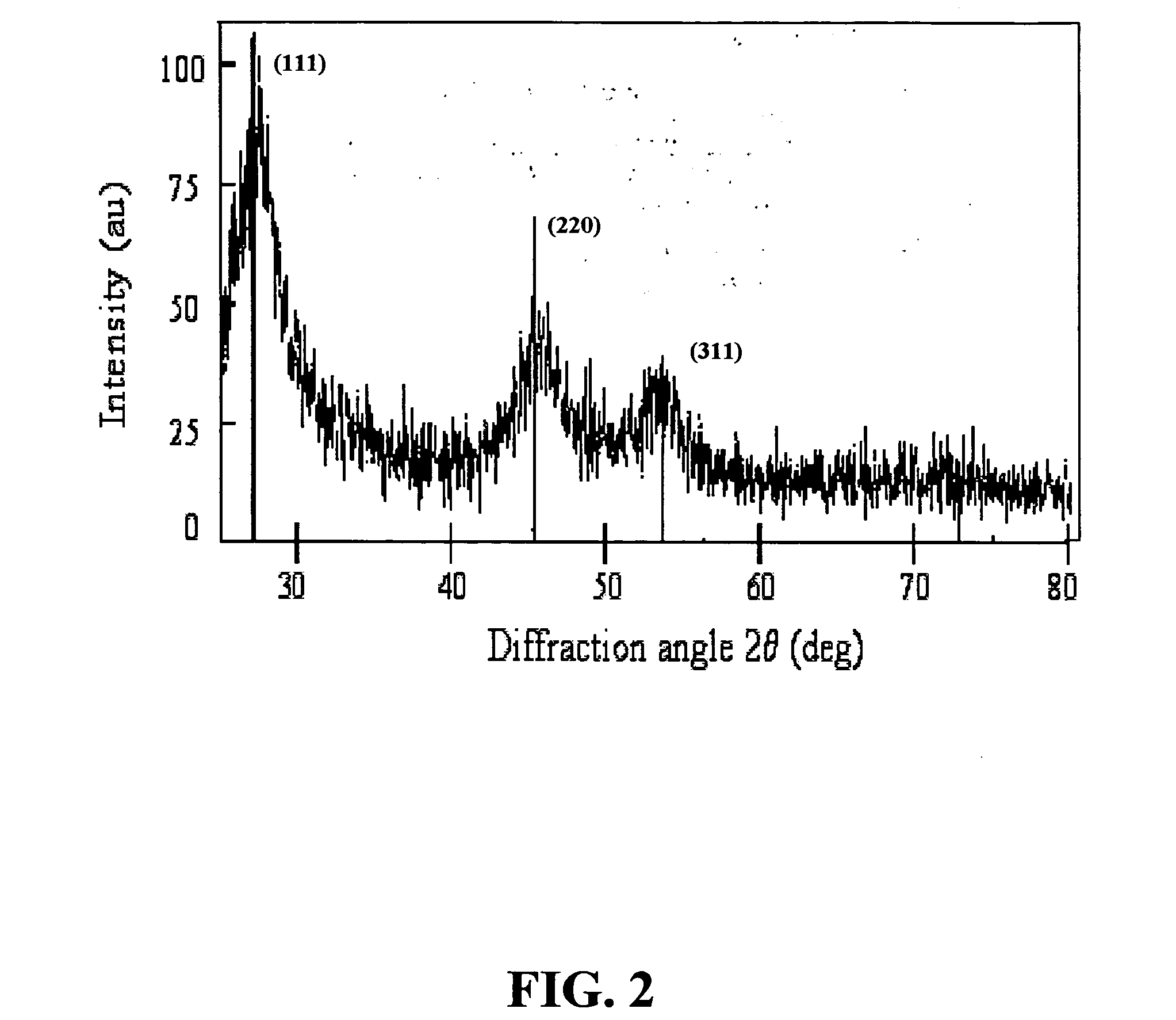Synthesis of nanoparticles by an emulsion-gas contacting process
a technology of emulsion gas and nanoparticles, which is applied in the direction of colloidal chemistry, liquid handling, transportation and packaging, etc., can solve the problems of inability to isolate particles with specific, pre-determined particle sizes, and inability to control particle size distribution in such reactors, etc., to achieve easy scale-up for industrial production, and precise control of nanoparticle siz
- Summary
- Abstract
- Description
- Claims
- Application Information
AI Technical Summary
Benefits of technology
Problems solved by technology
Method used
Image
Examples
example 1
Synthesis and Size-Control of Luminescent ZnSe Nanocrystals by a Microemulsion-Gas Contacting Technique
A schematic representation of one embodiment of emulsion-gas contacting technique of the present invention is shown in FIG. 1. A microemulsion was formed by self assembly using a solution of diethylzinc ((C2H5)2Zn) in n-heptane (n-C7H16) as the dispersed oil phase, formamide (CH3NO) as the polar continuous phase, and an amphiphilic block copolymer, poly(ethylene oxide)-poly(propylene oxide)-poly(ethylene oxide) or PEO-PPO-PEO, as the surfactant. PEO is the formamide-soluble block and PPO the heptane-soluble block (Alexandridis et al., Macromolecules 33:3382(2000), which is hereby incorporated by reference in its entirety). PEO-PPO block copolymers represent an exciting class of amphiphilic molecules with high versatility, in terms of self-assembly and corresponding practical applications (Alexandridis et al., Eds. Amphiphilic Block Copolymers: Self-Assembly and Applications, Else...
example 2
Evaluation of Synthesis and Size-Control of Luminescent CdSe Nanocrystals by a Microemulsion-Gas Contacting Technique
The microemulsion-gas contacting technique of the present invention has been extended to CdSe nanocrystal synthesis. X-ray diffraction patterns obtained from CdSe particles synthesized by bubbling hydrogen selenide diluted in hydrogen through a dimethylcadmium solution in heptane at room temperature confirm the formation of cubic CdSe. A microemulsion was formed by self assembly using a solution of dimethylcadmium ((CH3)2Cd) in n-heptane (n-C7H16) as the dispersed oil phase, formamide (CH3NO) as the polar continuous phase, and an amphiphilic block copolymer, poly(ethylene oxide)-poly(propylene oxide)-poly(ethylene oxide) or PEO-PPO-PEO, as the surfactant. PEO is the formamide-soluble block and PPO the heptane-soluble block (Alexandridis et al., Macromolecules 33:3382 (2000), which is hereby incorporated by reference in its entirety). PEO-PPO block copolymers represe...
PUM
 Login to View More
Login to View More Abstract
Description
Claims
Application Information
 Login to View More
Login to View More - R&D
- Intellectual Property
- Life Sciences
- Materials
- Tech Scout
- Unparalleled Data Quality
- Higher Quality Content
- 60% Fewer Hallucinations
Browse by: Latest US Patents, China's latest patents, Technical Efficacy Thesaurus, Application Domain, Technology Topic, Popular Technical Reports.
© 2025 PatSnap. All rights reserved.Legal|Privacy policy|Modern Slavery Act Transparency Statement|Sitemap|About US| Contact US: help@patsnap.com



